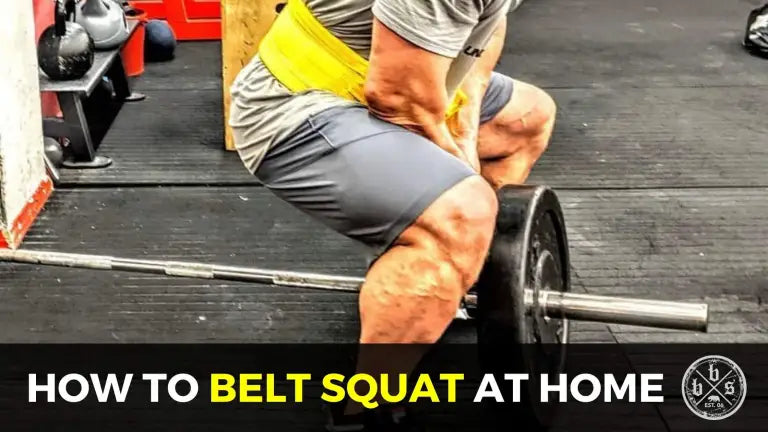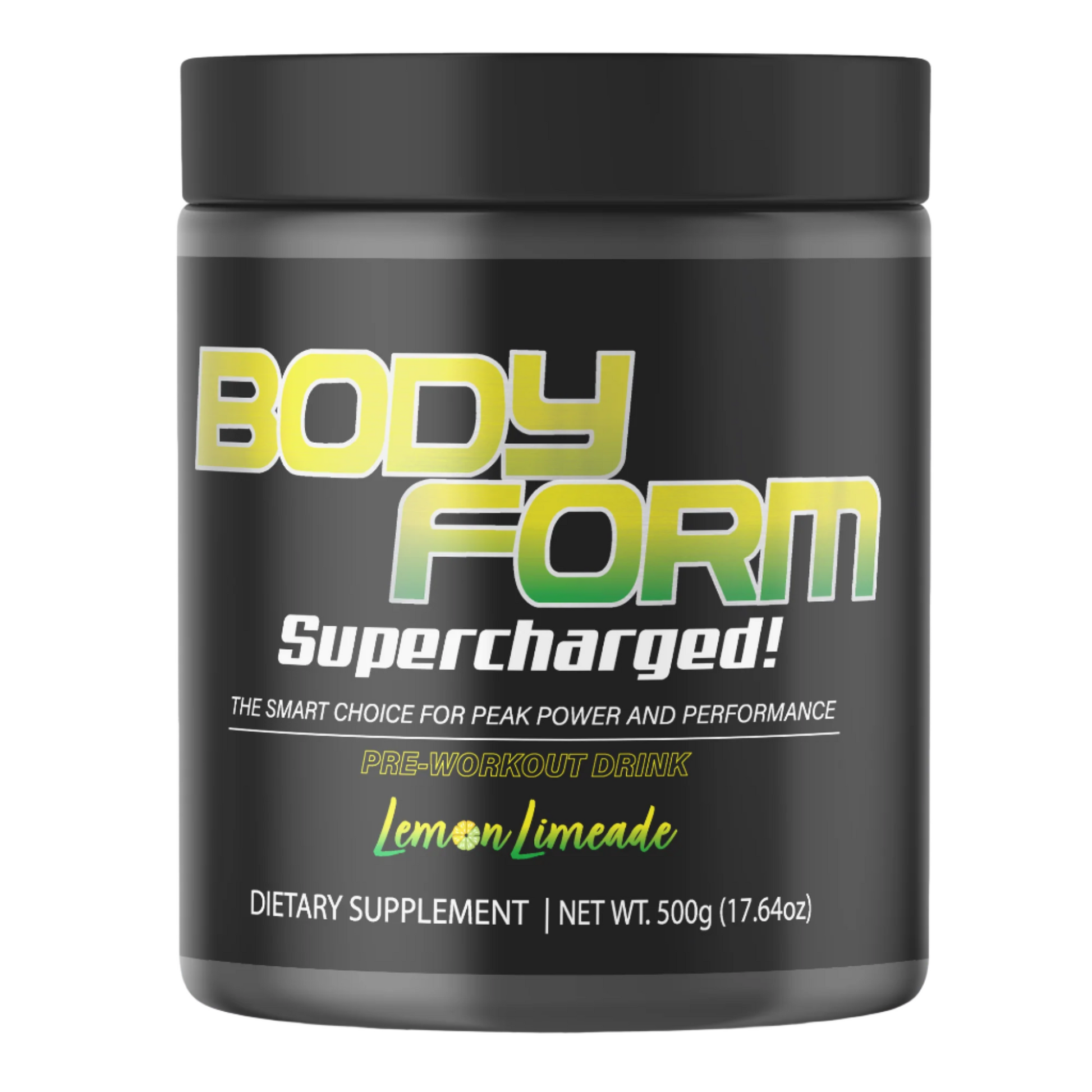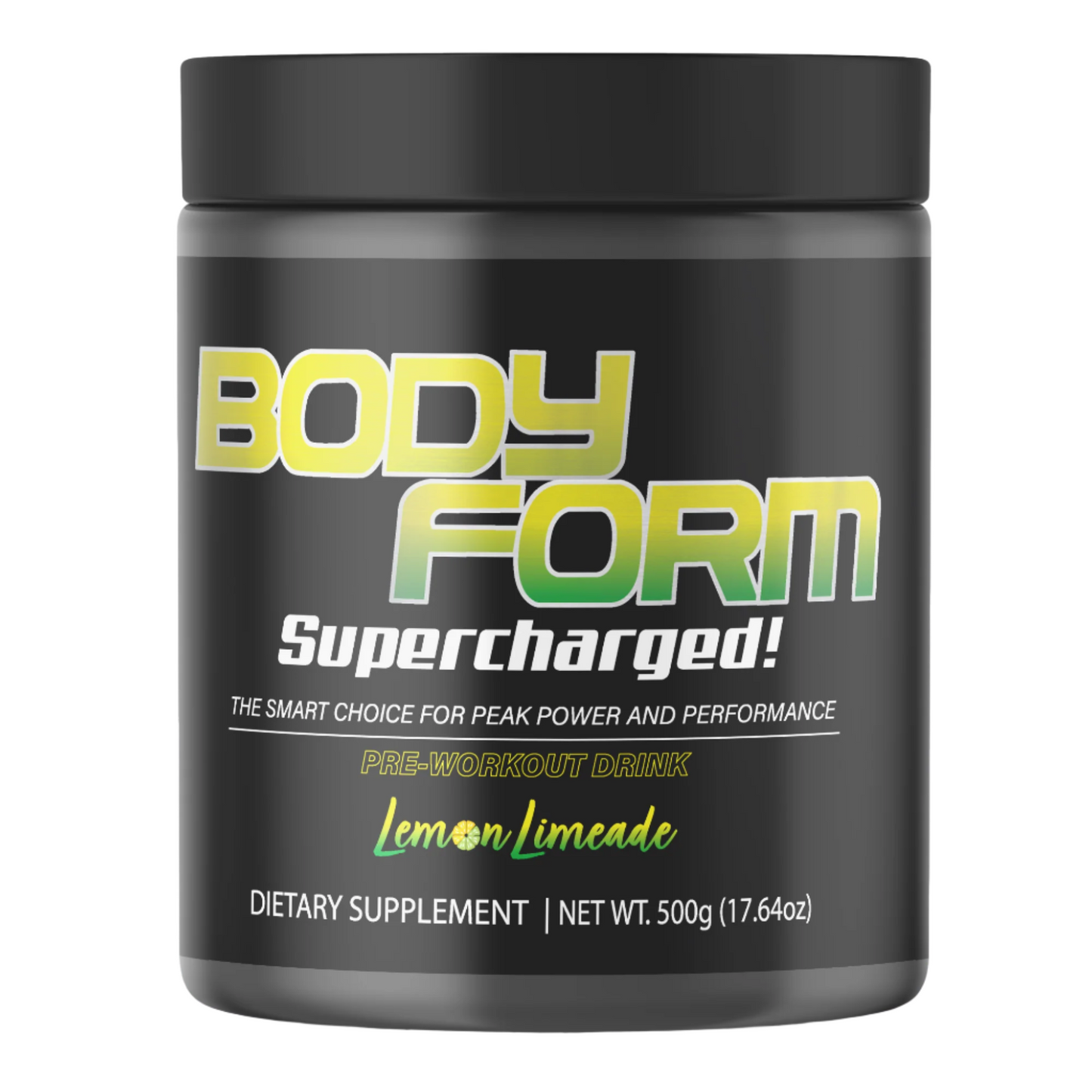
How to Belt Squat At Home
Share
How to Belt Squat at Home
To build big-powerful legs you must squat regularly. Bodybuilders and powerlifters both agree that the barbell squat is the key to full leg development. Being able to squat to the proper depth with a decent amount of weight on your back is a guaranteed way to grow tree trunk legs. As essential as the barbell squat is, there will come a time where you will need more variation to your workouts.
The key to continuing to see progress in your squat is to find exercises that closely resemble the squat but offer a new stimulus. This keeps in line with the specificity principle (one of the 7-laws of training organized by Dr. Squat, aka Dr. Fred Hatfield). The belt squat is an exercise developed to keep making progress in barbell squat.
What is the Belt Squat?
The hip belt squat is a unique way to perform a squat with your arms free and the weight of your back. A belt squat uses a dip belt-like attachment placed around your waist. We then attached the belt to a load (weight) below the body.
The movement pattern is like a goblet squat, without restricting you to the amount of weight you can hold in your hands. With total concentration on the legs, a belt squat belt allows you to use heavy weights creating serious muscle activation.
Why do I need to Belt Squat?
The best use of the belt squat is when it is a squat variation. It makes for the perfect accessory lift for the barbell squat since it nearly mimics the movement pattern. Since the barbell squat places a heavy load on your back, frequent use can lead to spinal compression. The belt squat is an exercise that provides spinal decompression since the weight is below the hips.
You can use the belt squat after the back squat or as a replacement for it on an alternate leg day. For those suffering from an injury, it may become the much-needed complete replacement for the squat.
Is the belt squat worth it?
The quick answer is yes. However, the amount of money you spend on it is the real question. A belt squat machine can cost upwards of $2,000.00, which is probably more than most will want to spend. The good news is that you can create a DIY belt squat can for less than $50.00.
Depending on the equipment available in your commercial or home gym, you may have most of what you need already. There are a few mandatory components to the belt squat you will need.
Belt Squat Belts
The type of belt that goes around your waist will determine the comfort you feel and the weight you can handle. This is perhaps the area you should be the least budget-conscious as the better the belt the more you can concentrate on the movement.
Chain with Pool Noodle
The most DIY you can get with your belt is to put a heavy-duty chain through a pool noodle. This may be a temporary solution but over time you will need to replace the noodle.
Dip Belt
If you already have a dip belt, this is a great way to give the belt squat a test run. Most manufacturers build these belts to handle a modest amount of weight so they will work in the beginning. Once you are handling some serious weight, they may not hold up as the chain strength and fabric material may not be intended for such heavy loads.
Belt Squat Belts
A high-quality belt as the Spud belt squat belt does exactly what it says it will. These belts will stand the test of time and with care, can be passed down from generation to generation. The durability of these types of belts makes them useful for other heavy-duty exercises like sled drags.
Belt Squat Attachments
What you attach to your belt needs to be sturdy. An attachment point breaking during the lift could lead to serious injury. Don’t be cheap here as it may cost you more in medical bills than it would be to purchase the best belt squat machine.
Olympic Weights
The least expensive setup is to use the weights you already have. By looping the chain through the hole you can add a few 45’s and create a demanding workout. Getting into and out of the exercise is a little awkward, but to start this will work perfectly fine.
Landmine Attachment
A great way to attach your belt is to set it up with a barbell in a landmine attachment. This allows you to add weight quickly and is easy to get into and out of the exercise. To secure the barbell in place you will want to loop the chain between two barbell collars. This prevents it from slipping back and forth as you squat down and up.
Loading Pin attachment
Every garage gym should have a loading pin as they offer a lot of variety. You can use a loading pin for cable pulleys and with a handle, they become a kettlebell or dumbbell. The loading pin is also a great way to attach your belt squat belt.
There are not a lot of instructions required for this version. Simply hook a carabiner to the middle of the chain and then hook it to the loading pin. Step up on your platform and squat away!
Low Cable Pulley
By attaching the chain to a low cable pulley you can perform a belt squat but the emphasis on the muscles will shift. Because the weight is out in front of you rather than underneath you it will require more quadriceps and less glute and hamstring activation.
Belt Squat Platforms
To properly perform the belt squat, you will need to have your feet elevated well off the ground with space in between wide enough for the weight.
A great way to injure yourself is to use a platform that is weak or unstable. Using a platform that can handle more weight than you can load is a good idea. Thankfully, there are plenty of these types of options available.
Heavy Rubber Gym Floor Mats
We can use rubber gym flooring for more than just for preventing weights from smashing into the concrete. Having 10-12 extra mats lying around gives you the ability to create height advantages and disadvantages for many exercises. They also provide a wide and sturdy surface for performing belt squats.
Jump or Plyo Box
If you have these on hand for plyometric exercises, then you can also use them for box squats. Be careful though as most are hollow in the center and unless you are well balanced, they can easily tip over. Make sure you have a heavy-duty plyo box if you choose to use it for this exercise.
Power Rack Plyo Step Attachment
Your power cage and squat rack may allow for a step platform to be attached. However, most racks are too wide to have two step attachments pointed out from the front uprights. To use this version they will need to face inward towards each other. If you do not have these holes and if your rack is strong enough, you may drill out specific holes for this purpose.
Belt Squat Machines
While there is a wide gap in price between a DIY belt squat and a belt squat machine, the machine has advantages that may be worth considering.
Are Belt Squat Machines Worth it?
This will depend on many factors including:
- Frequency of use
- Space in garage or home gym
- Your value of exercise efficiency
- Training intent
- $$ on hand
Are you someone who plans to use the machine regularly, has plenty of space, values time over money, and has extra cash? Then buying a belt squat machine is a good idea. Or, you might also want to invest in a machine if home gym training is your passion. If this is you, you are not alone!
Speaking more directly about the exercise itself, getting too muscular failure is easier with a machine. There is more risk in the DIY versions as you near the final rep where your muscles can move the weight up.
It is easier to exit a belt squat machine than the other versions. So if you are at a place in your training where this level of intensity is required, then a belt squat machine may be your best investment.
The Best DIY Belt Squat Setup
Each person’s home gym will ultimately decide about which belt squat machine is best. However, if we had to choose one that offers the most versatility of other exercises and safety during the movement, it would be:
- Spud Inc. Belt Squat Belt
- Landmine attachment fixed to the center rear bottom post of a power rack.
- Two Step attachments faced inward towards each other
- Safety bars are fixed at a height where you can comfortably hold the bars for stability.
The Best Belt Squat Machine
Every maker of a belt squat machine will claim advantages to their version and they are probably right. However, if we are trying to mimic the squat as closely as possible, the Squat Max-MD comes the closest to activating the same muscle fibers as a barbell squat and compared to other leading belt squat machine competitors.
However you choose to belt squat, just do it! The belt squat is a great exercise for building powerful legs while giving the back a much-needed break.






